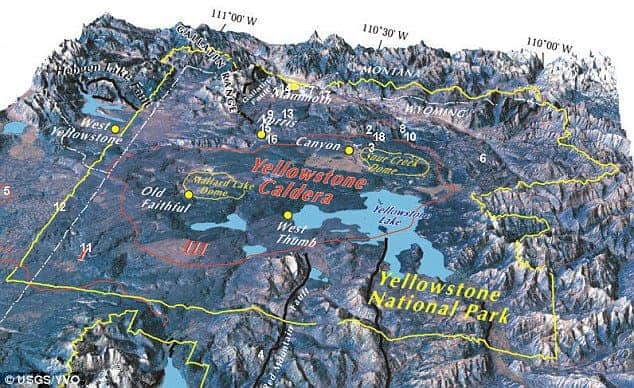We’ve seen a lot of things go wrong in 2020: from Australia’s massive wildfire to the COVID-19 pandemic, sprinkled with locust infestations and asteroid talk, this year has been pretty nasty. But all that would pale in comparison to a potential Yellowstone eruption.
If Yellowstone were to truly erupt, it would cover much of North America in smoke and ash, triggering a climate cooling that would last for decades and affect the entire planet, almost certainly leading to world hunger and wars — it’s a truly cataclysmic scenario.
Luckily, the odds of that happening are pretty low; even lower than we thought, according to a new study.
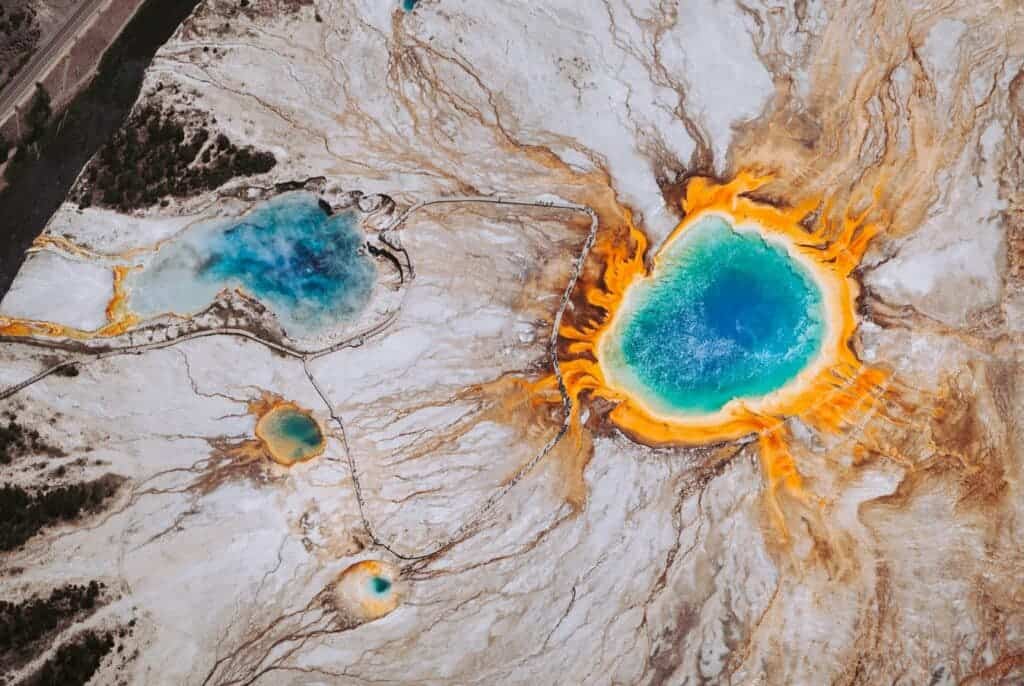
It is often said that Yellowstone is “overdue for a new eruption”, and while that may be true in a sense, it’s not true in the sense you’re probably thinking of.
Yellowstone last erupted approximately 2.1 million years ago, 1.3 million years ago, and 630,000 years ago. At first glance, it seems like there’s a cyclicity there, and it also seems like “now” would be a good fit in that timeline. But there are two problems with that rationale: first of all, volcanoes don’t necessarily follow a tight schedule, and second of all, the geologic “now” tends to have a margin of error of hundreds of thousands of years.
So if a Yellowstone super-eruption was on your doomsday list, it really shouldn’t be. But if you’re still not convinced, a new study might give you some more comfort.
Geologists have found evidence of two ancient hidden eruptions, concealed under Yellowstone’s surface. This newly uncovered evidence suggests that Yellowstone’s ability to produce super-eruptions might actually be waning.
A geological hotspot
Yellowstone’s volcanic activity is connected to a geological hotspot. A hotspot is a blob-like area fed by a zone of the underlying mantle that is anomalously hot. Hawaii and Iceland are two other classic hotspot examples.
The thing about a hotspot is that since it is connected to the mantle, it remains fixed in place, while the tectonic plates and everything on the surface is constantly moving (at a speed of a few centimeters per year). Relative to the tectonic plates, the hotspot seems to be moving — even though it is actually staying in place, and everything else on the surface is actually moving.
So the hotspot magma blob stays in place, the tectonic plate moves, and as it moves, it leaves a track behind it.
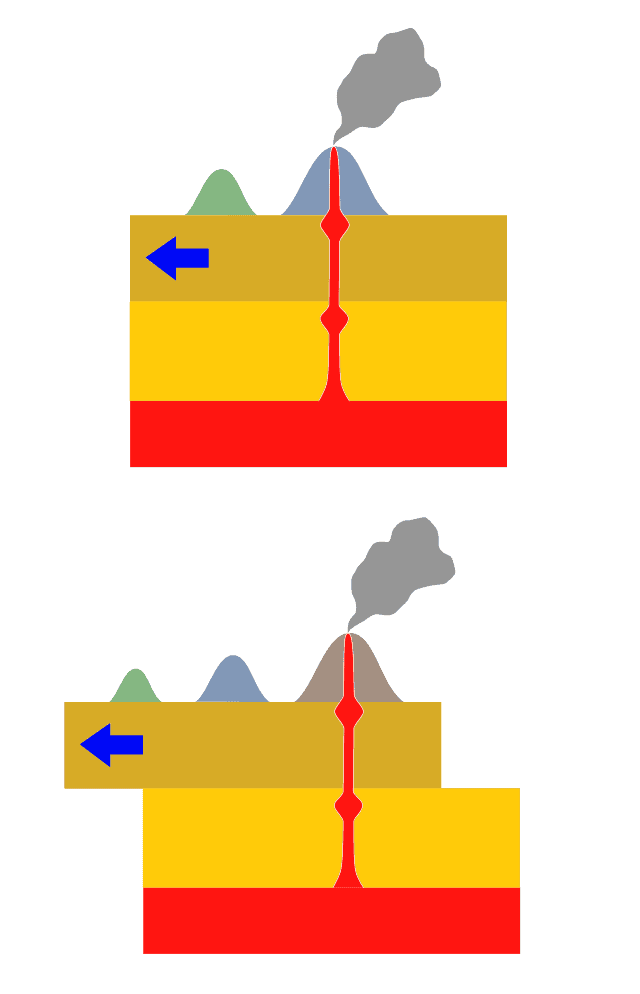
This is also the case with Yellowstone: it hasn’t always been there. Parts of what are now Idaho, Nevada, Montana, Oregon and Wyoming have all been on top of the Yellowstone hotspot — which means they all hold clues of Yellowstone’s past volcanic activity.
Using a mixture of chemical, magnetic, and radio-isotopic techniques, a team of researchers analyzed this track spread over tens of thousands of square kilometers. They managed to map two previously unknown super-eruptions coming from Yellowstone.
“We discovered that deposits previously believed to belong to multiple, smaller eruptions were in fact colossal sheets of volcanic material from two previously unknown super-eruptions at about 9.0 and 8.7 million years ago,” says Thomas Knott, a volcanologist at the University of Leicester and the paper’s lead author.
Researchers now propose that the two super-eruptions (the McCullen Creek eruption and the Grey’s landing eruption) took place 9 million years ago and 8.72 million years ago respectively. The former covered a 4,600-square-mile area (12,000 square km) in southern Idaho, while the latter was absolutely “colossal”, covering 8,900 square miles (23,000 square km) in Idaho and Nevada — this would make it the single largest eruption ever detected around Yellowstone, and one of the top five eruptions ever detected — over 1,000 times larger than the St. Helens eruption.
“The Grey’s Landing supereruption … is one of the top five eruptions of all time,” Knott said. “[It] enameled an area the size of New Jersey in searing-hot volcanic glass that instantly sterilized the land surface. Particulates would have choked the stratosphere, raining fine ash over the entire United States and gradually encompassing the globe.”
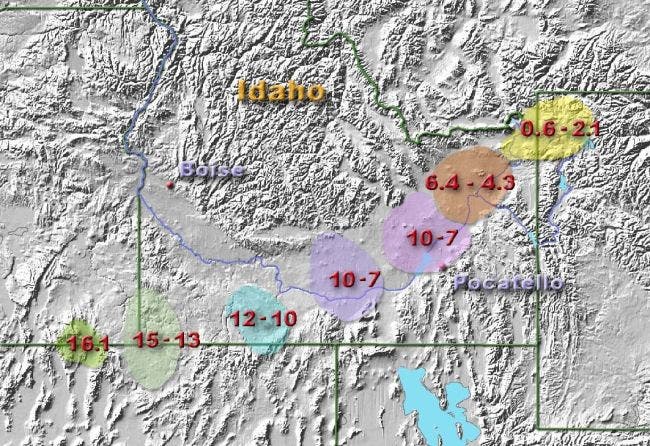
These older eruptions are also larger than the ones that took place 2.1 million years ago and 630,000 years ago, with the massive Grey’s landing eruption being 30% larger than the ones 2.1 million years ago. The more recent activity is also more sporadic — which suggests that Yellowstone is losing steam, as it seems to be erupting both at a slower pace and with smaller eruptions. Knott comments:
“We have demonstrated that the recurrence rate of Yellowstone super-eruptions appears to be once every 1.5 million years,” he says. “The last super-eruption there was 630,000 years ago, suggesting we may have up to 900,000 years before another eruption of this scale occurs.” But this estimate, Knott hastens to add, is far from exact, and he emphasizes that continuous monitoring in the region, which is being conducted by the U.S. Geological Survey, “is a must” and that warnings of any uptick in activity would be issued well in advance.
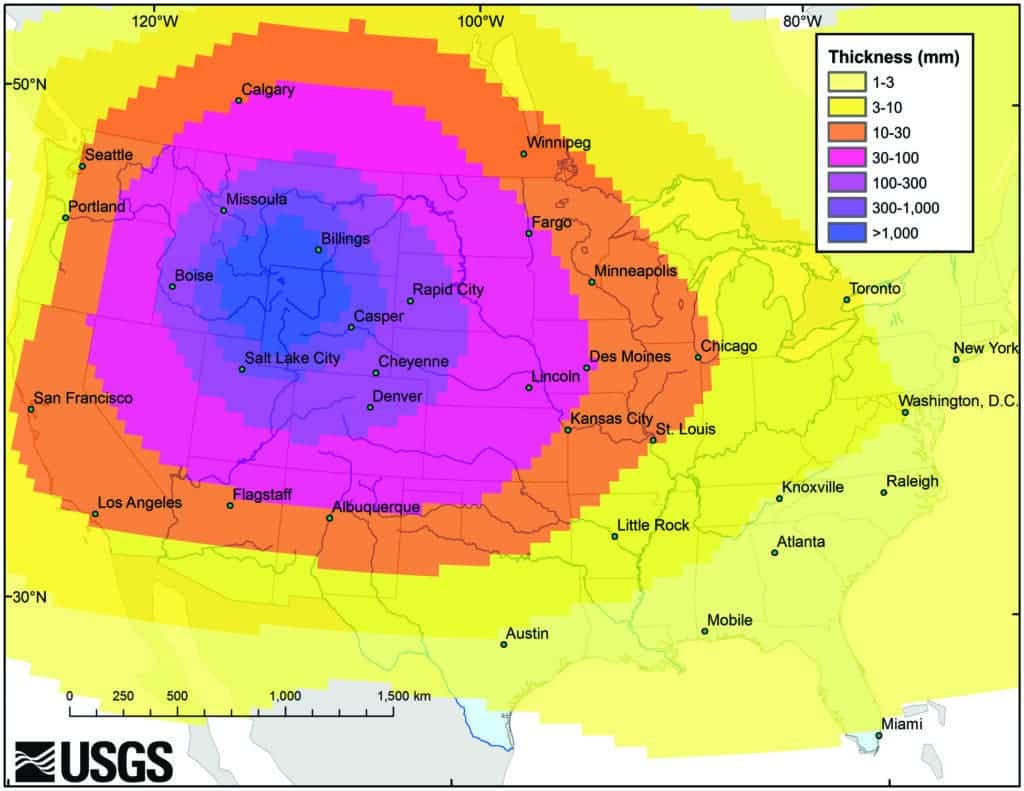
Of course, this doesn’t mean we’re off the hook. Technically, a supereruption could happen at any time. But what this study goes to show is that it could be hundreds of thousands of years before another eruption happens, and if anything, the eruptions are slowing down, not accelerating.
Researchers are constantly monitoring seismic activity around the park to predict the likelihood of a future eruption.
The study has been published in Geology.
